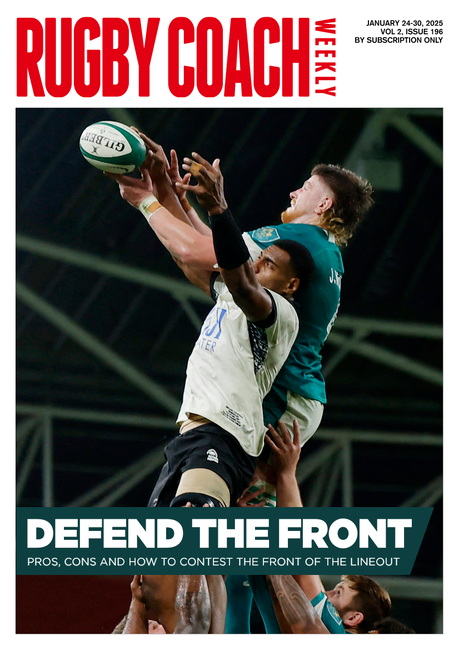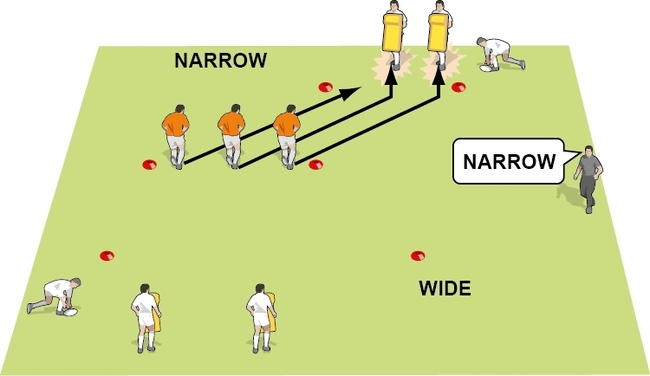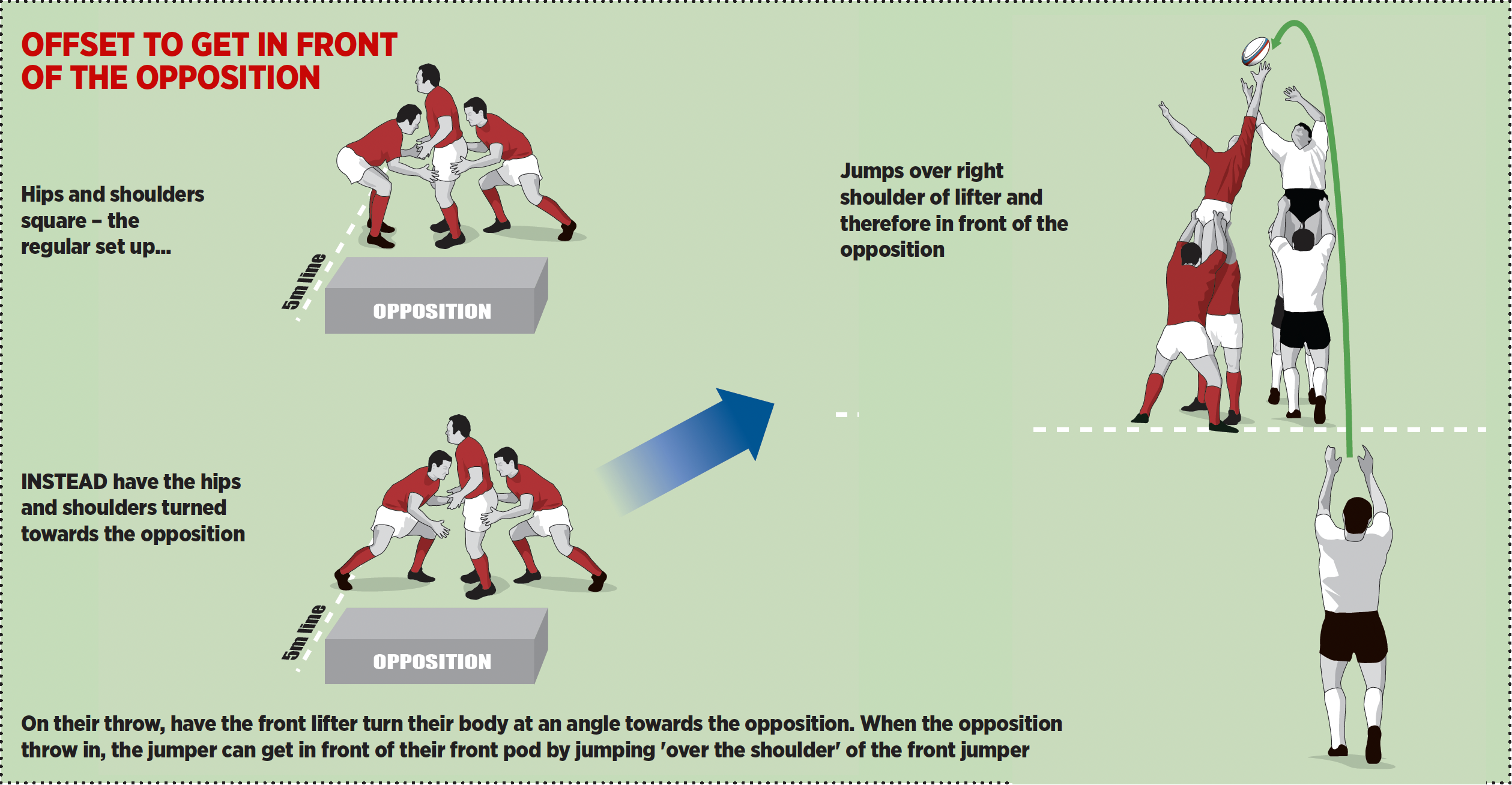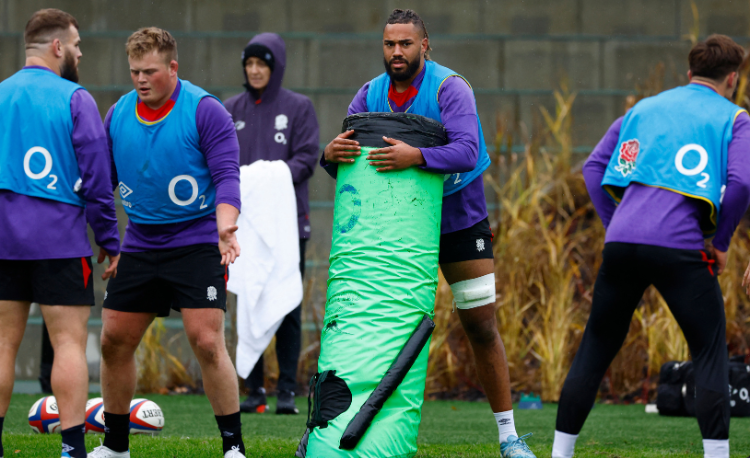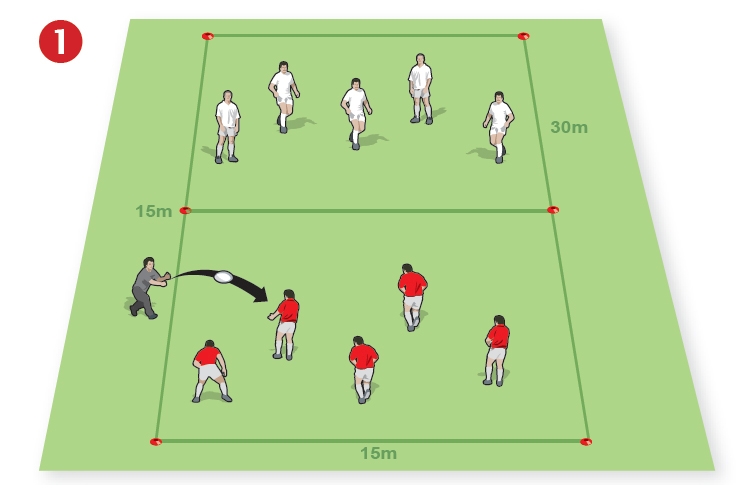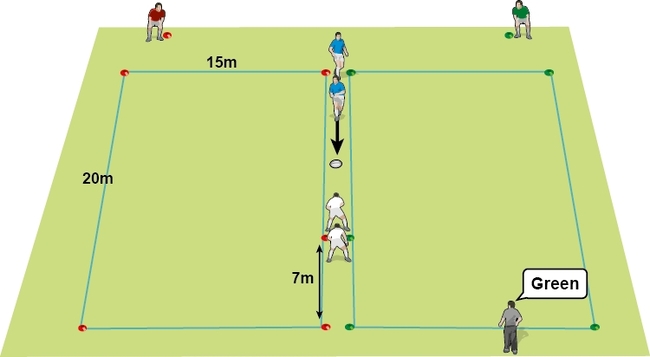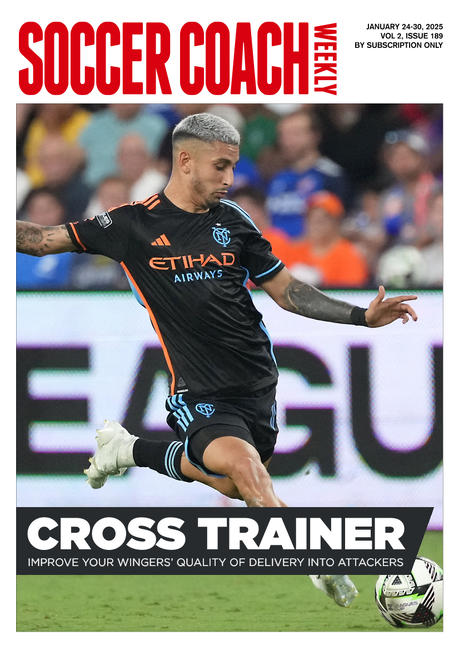Power defence on the try line
The “must-have” defensive system for your own try line.
Successfully defending constant pressure on your own try line can be a game turning moment as the opposition become disheartened and your players grow in self belief.
There are four key areas to be defended, each with specific responsibilities.
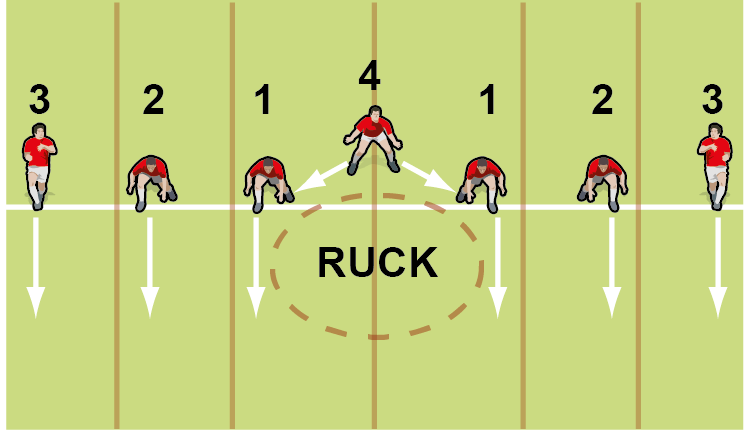
In the picture, players 1 to 3 defend an area from their outside shoulder to the area inside them, as denoted by the vertical lines in the picture.
To maintain their area’s integrity, these players should only move forwards in their area until two passes have been made away from the ruck. Then they start to move towards the direction of the pass.
Players 2 and 3 should be wide enough to maximise the distance protected without compromising security. Once these players are in place they do not change.
Naturally, players need to remain behind the back feet of the ruck unless the ruck straddles the goal line, which then becomes the offside line.
FOUR DEFENSIVE TRY LINE AREAS
1 The “post”
The player stands just more than an arm’s length from the ruck to avoid being pulled in. This player tackles opponents into or behind the ruck.
2 The “guard”
The player tackles opponents towards the ruck.
These two defenders should take a stance with their outside foot forwards and inside hand on the ground (behind the back foot), thus maintaining a low, square-on position.
3 The “key”
This player tackles opponents towards the ruck. They call the defensive line forwards when the ball is picked from the ruck.
4 “Man in the hole”
They cover the gap behind the ruck as secondary help for the “post” players. They act as eyes for the defence and calls players over in wider defensive positions.
Newsletter Sign Up
Coaches Testimonials

Gerald Kearney, Downtown Las Vegas Soccer Club

Paul Butler, Florida, USA

Rick Shields, Springboro, USA

Tony Green, Pierrefonds Titans, Quebec, Canada
Subscribe Today
Be a more effective, more successful rugby coach
In a recent survey 89% of subscribers said Rugby Coach Weekly makes them more confident, 91% said Rugby Coach Weekly makes them a more effective coach and 93% said Rugby Coach Weekly makes them more inspired.
Get Weekly Inspiration
All the latest techniques and approaches
Rugby Coach Weekly offers proven and easy to use rugby drills, coaching sessions, practice plans, small-sided games, warm-ups, training tips and advice.
We've been at the cutting edge of rugby coaching since we launched in 2005, creating resources for the grassroots youth coach, following best practice from around the world and insights from the professional game.


